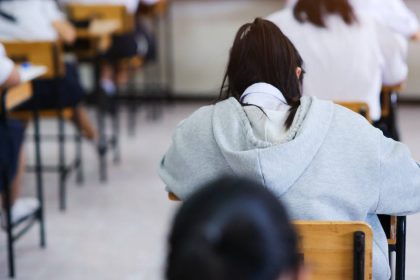Queensland unions representing teachers and school leaders have developed an innovative traffic light rating system to guide teachers’ use of artificial intelligence (AI) in education.
The Queensland Teachers’ Union (QTU) and the Independent Education Union – Queensland and Northern Territory Branch (IEU-QNT) have jointly published a set of resources to advise their members on the use of AI in schools.
IEU-QNT Branch Secretary Terry Burke said the guidelines covered four key areas: ethical responsibilities of teachers, schools and education systems; curriculum and pedagogy; products and platforms; and workplace health and safety considerations.
“The resources aim to be a guide that considers the legal, industrial, professional and educational issues arising from increased use of digital technologies,” Mr Burke said.
This rating system classifies AI resources into three different categories:
- Green represents applications that reduce teacher workload and/or support student learning without undermining the role of the teacher or negatively impacting learning.
- Amber applications require wider consultation to ensure their adoption does not undermine the teacher’s role or negatively impact learning.
- Red applications can undermine the role of the teacher and/or negatively impact the learning process and are therefore deemed inappropriate and unsafe.
QTU President Cresta Richardson said the resources aimed to help teachers frame their professional opinions on how, when and where the technologies are deployed in the classroom.
“We hope to spark discussion within the teaching profession because current practitioners are best-positioned to decide what applications of AI and other digital technologies are appropriate for specific students and contexts,” Ms Richardson said.
“Both our unions are represented on the Queensland Curriculum and Assessment Authority’s (QCAA) AI Working Group and the Federal Education Minister’s AI Education Taskforce to ensure the voices of practising teacher union members are heard.”
A rising demand for AI
These new guidelines come after Federal Education Minister Jason Clare recently announced a possible reversal of the ban on public school students using generative AI tools in 2024.
The government had previously banned the use of AI in classrooms at the beginning of the school year out of fear the technology would be used for plagiarism and cheating.
For the nation’s overworked teachers, these AI assistants are being welcomed with open arms as a way to ease the burden of a piling administrative workload.
Paul Matthews, Co-Founder and CEO of AI-powered teaching tool MyTeacherAide, says that AI-powered technology is becoming a necessity in the realm of education.
Just days after announcing their pilot program for MyTeacherAide, the team were reportedly overwhelmed with the number of teachers applying to participate.
“As a teacher myself, I understand the stress that comes with the profession. AI presents a real hope for stressed-out teachers,” he said.
“We built MyTeacherAide to tackle the root of educators’ issues head-on, and the overwhelming response we’ve received is a clear indication that our solution is not just wanted but profoundly needed.”
The strain on teachers is evident across the country. The latest data by the Black Dog Institute shows that 70 per cent of the teachers reported having unmanageable workloads, and almost half (46.8 per cent) considered leaving the profession entirely within the next 12 months.








